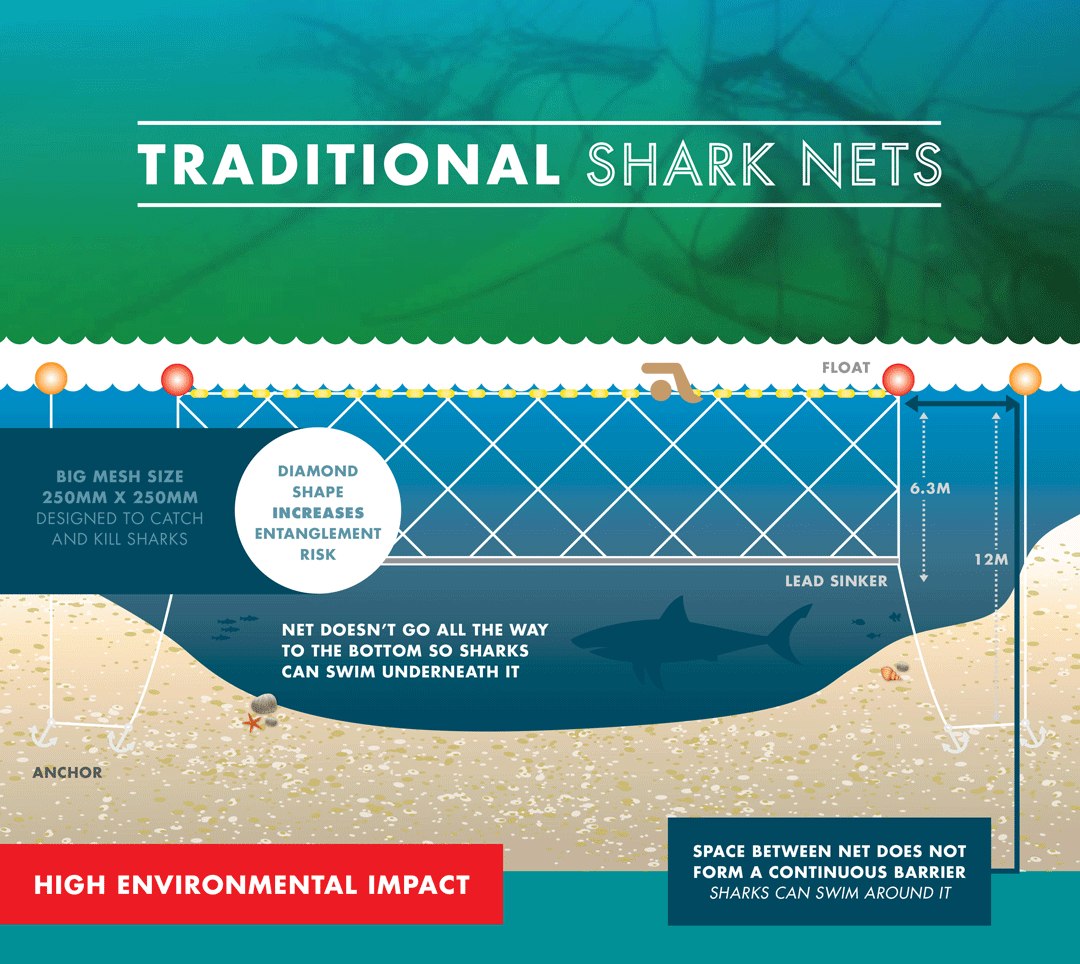Australia's coastal waters are home to a diverse array of marine life, including the iconic yet misunderstood predator, the shark. As Australians flock to beaches, safety becomes a paramount concern, with shark nets being a common protective measure. But do these nets truly safeguard swimmers, or are they merely a stopgap solution with hidden repercussions?
The Role of Shark Nets in Australia
Shark nets have been a part of Australia's coastal defense since the 1930s, primarily along the New South Wales and Queensland coasts. Their intended purpose is to reduce the risk of shark attacks by creating a barrier between sharks and swimmers. However, these nets are not foolproof; they are designed to entangle sharks rather than form a complete barrier, leading to questions about their effectiveness and environmental impact.
Effectiveness and Limitations of Shark Nets
Despite their widespread use, data from the Australian Marine Conservation Society suggests that shark nets do not significantly reduce the chances of shark encounters. Instead, their effectiveness is often limited by factors such as incomplete coverage and the ability of sharks to swim under or around the nets. Furthermore, incidents of shark attacks have been reported even in netted areas, underscoring the limitations of this approach.
Environmental Impact: A Double-Edged Sword
While shark nets aim to protect humans, they inadvertently cause harm to marine ecosystems. According to the Australian Bureau of Statistics, approximately 90% of marine life caught in shark nets are non-target species, including dolphins, turtles, and rays. This bycatch not only threatens biodiversity but also disrupts the balance of marine ecosystems, which can have long-term ecological and economic consequences.
Case Study: The Economic Impact on Local Fisheries
A study conducted by the University of Sydney highlighted the economic implications of shark nets on local fisheries. The entanglement of commercially valuable fish species affects the livelihood of fishers, leading to economic losses. As these species decline, the fishing industry's sustainability is jeopardized, impacting local economies that rely heavily on marine resources.
Alternative Solutions: A Technological Perspective
In response to the limitations of shark nets, Australia is exploring innovative technologies to enhance beach safety. Non-invasive solutions like aerial drones, smart buoys, and electronic deterrent devices are gaining traction. These technologies offer real-time monitoring and alerts, minimizing human-shark interactions without harming marine life.
Case Study: The Success of Shark Spotters in South Africa
Inspired by the success of the Shark Spotters program in South Africa, which uses a combination of spotters and flag systems to alert swimmers about shark presence, Australian beaches are adopting similar strategies. This approach has significantly reduced shark incidents and improved public safety without the environmental drawbacks of traditional shark nets.
Regulatory Insights: Australia's Policy Landscape
The Australian Competition and Consumer Commission (ACCC) plays a crucial role in regulating beach safety equipment and ensuring that new technologies comply with safety standards. As Australia's coastal tourism industry contributes significantly to the economy, maintaining a balance between safety and environmental conservation is essential. The ACCC's guidelines promote the development and deployment of sustainable safety measures that protect both humans and marine life.
Common Myths and Misconceptions
- Myth: Shark nets create a complete barrier against sharks. Reality: Sharks can swim under or around these nets, making them an incomplete solution.
- Myth: All marine life caught in shark nets are dangerous predators. Reality: Most bycatch consists of non-threatening species, posing no risk to humans.
- Myth: Shark nets are the most cost-effective solution. Reality: The long-term ecological and economic costs often outweigh the benefits.
Future Trends and Predictions
As awareness of the ecological impact of shark nets grows, Australia is likely to shift towards non-invasive safety technologies. By 2030, it is predicted that 50% of Australian beaches will employ drone surveillance and electronic deterrents, according to a report by CSIRO. These advancements will enhance beach safety while preserving marine biodiversity, aligning with Australia's commitment to sustainable tourism.
Conclusion
The ongoing debate about shark nets underscores the need for a balanced approach that prioritizes both human safety and environmental conservation. As Australia continues to innovate and adapt, the integration of technology-driven solutions will play a pivotal role in redefining beach safety. Embracing these advancements will ensure that Australia's coastlines remain not only safe but also ecologically vibrant for future generations.
Final Takeaways
- Shark nets have limited effectiveness and significant environmental drawbacks.
- Innovative technologies offer safer and more sustainable alternatives.
- Regulatory bodies like the ACCC are crucial in promoting balanced safety measures.
- Educating the public about shark behavior and safety can further enhance beach safety.
What's Next?
As a technology strategist, consider how emerging technologies can be leveraged to enhance public safety and environmental conservation. Engage with policymakers and industry leaders to advocate for sustainable solutions that protect Australia's unique marine ecosystems. Share your thoughts and insights on this topic in discussions on LinkedIn or relevant forums to foster a collaborative approach towards beach safety.
People Also Ask
- How do shark nets impact marine life in Australia? Shark nets often result in bycatch, affecting biodiversity by unintentionally capturing non-target species like dolphins and turtles.
- What are the alternatives to shark nets for beach safety? Technologies like aerial drones, smart buoys, and electronic deterrents provide non-invasive solutions that protect swimmers without harming marine life.
- Are shark nets effective in preventing shark attacks? While they aim to reduce shark encounters, nets are not foolproof and have limitations, as sharks can swim around or under them.
Related Search Queries
- Shark nets Australia effectiveness
- Environmental impact of shark nets
- Alternatives to shark nets
- Shark safety technology
- Marine conservation Australia
- Shark deterrent devices
- Shark attack prevention methods
- ACCC regulations on beach safety
- Drone surveillance for sharks
- Marine ecosystem protection strategies






























